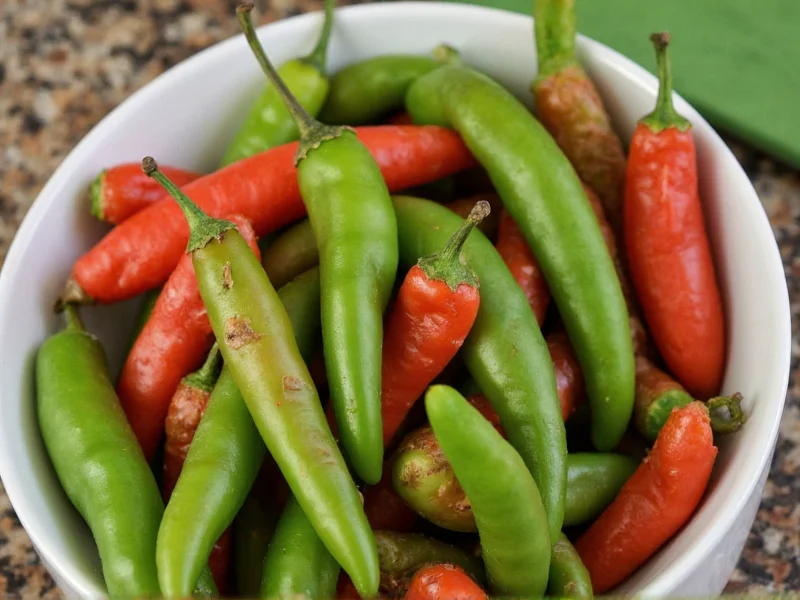Understanding where jalapeños fall on the Scoville scale provides valuable context for cooking and consumption. The Scoville scale, developed by pharmacist Wilbur Scoville in 1912, measures the concentration of capsaicinoids—the compounds responsible for a pepper's heat. While jalapeños sit comfortably in the mild-to-medium category, their actual heat can vary significantly based on growing conditions, ripeness, and even individual pepper characteristics.
What the Jalapeño Scoville Range Means Practically
When you bite into a jalapeño, you're experiencing heat that's 25-80 times milder than a habanero (100,000-350,000 SHU) but noticeably hotter than a bell pepper (0 SHU). This moderate heat level explains why jalapeños have become so popular in cuisines worldwide—they deliver flavor and a pleasant warmth without overwhelming spiciness for most people.
The reason for the wide jalapeno scoville heat range (2,500-8,000 SHU) lies in several factors. Environmental stressors like temperature fluctuations, water availability, and soil conditions can dramatically affect capsaicin production. Counterintuitively, stressed plants often produce hotter peppers as a defense mechanism. Additionally, the heat concentrates in the pepper's placenta (the white ribs inside) and seeds, so how you prepare jalapeños significantly impacts their perceived heat level.
Comparing Jalapeños to Other Common Peppers
| Pepper Variety | Scoville Heat Units (SHU) | Relative Heat Compared to Jalapeño |
|---|---|---|
| Bell Pepper | 0 | 0x (No heat) |
| Jalapeño | 2,500-8,000 | 1x (Baseline) |
| Serrano | 10,000-23,000 | 2-4x hotter |
| Cayenne | 30,000-50,000 | 6-10x hotter |
| Habanero | 100,000-350,000 | 20-40x hotter |
Many people wonder about the jalapeno scoville vs serrano comparison. Serranos typically run 2-4 times hotter than jalapeños, making them a significant step up in heat while maintaining similar flavor profiles. This comparison helps cooks decide which pepper works best for their desired heat level without compromising flavor.
Factors That Influence Jalapeño Heat Levels
Several elements affect why some jalapenos are hotter than others:
- Ripeness: As jalapeños mature and turn from green to red, their heat often increases. Red jalapeños typically measure toward the higher end of the scoville scale jalapeno range.
- Growing conditions: Plants experiencing water stress or temperature extremes produce more capsaicin, resulting in hotter peppers.
- Seed and membrane removal: The majority of capsaicin concentrates in the white pith and seeds. Removing these parts significantly reduces perceived heat.
- Cultivar differences: Some jalapeño varieties have been bred specifically for milder or hotter profiles.
Practical Applications in Cooking
Understanding jalapeno pepper scoville units helps in recipe development and customization. For those sensitive to spice, removing seeds and membranes can reduce heat by up to 80% while preserving flavor. When substituting jalapeños in recipes, consider that a single extremely hot jalapeño (approaching 8,000 SHU) delivers nearly three times the heat of a mild one (2,500 SHU).
Chefs often roast jalapeños to mellow their heat while enhancing their natural sweetness—a technique particularly useful when working with unexpectedly hot specimens. The jalapeno scoville heat range also explains why some commercial products like jalapeño poppers or canned jalapeños maintain consistent heat levels—they're carefully selected from within the lower end of the spectrum.
Measuring Heat Beyond the Scoville Scale
While the Scoville scale remains the most recognized measurement, modern high-performance liquid chromatography (HPLC) provides more precise capsaicin quantification. This scientific method measures actual capsaicinoid concentration rather than relying on human taste testers, which introduces subjectivity. However, the Scoville scale persists in popular usage due to its intuitive nature and historical significance.
Common Misconceptions About Jalapeño Heat
Several myths persist about jalapeño heat levels. Contrary to popular belief, the number of 'corking' lines (streaks on the pepper's surface) doesn't reliably indicate heat level, though it may suggest maturity. Similarly, smaller jalapeños aren't necessarily hotter—size relates more to growing conditions than capsaicin concentration.
Another common misunderstanding involves the jalapeno scoville comparison to other peppers. While habaneros are objectively much hotter, their distinct fruity flavor profile creates a different heat sensation that some perceive as more intense than the straightforward burn of a jalapeño.
FAQ: Understanding Jalapeño Heat
Why do some jalapeños taste much hotter than others?
Jalapeño heat varies due to growing conditions, ripeness, and individual plant genetics. Environmental stressors like inconsistent watering or temperature fluctuations increase capsaicin production. The heat concentrates in the white membranes and seeds, so how you prepare the pepper significantly affects perceived spiciness.
How can I reduce the heat of jalapeños when cooking?
To reduce jalapeño heat, remove all seeds and the white membranes (placenta) where capsaicin concentrates. Soaking sliced jalapeños in salt water or milk for 15-30 minutes can also draw out some capsaicin. Roasting peppers before use often mellows their heat while enhancing sweetness.
Are red jalapeños hotter than green ones?
Generally yes—red jalapeños are fully matured green ones and often measure toward the higher end of the 2,500-8,000 SHU range. However, heat depends more on growing conditions than color alone. Some red jalapeños may be milder if grown in optimal conditions without environmental stressors that increase capsaicin production.
How does the jalapeño scoville rating compare to black pepper heat?
Jalapeños (2,500-8,000 SHU) are significantly hotter than black pepper, which measures around 10-100 SHU. The piperine in black pepper creates a different type of heat sensation—more of a sharp, immediate burn that dissipates quickly compared to the lingering capsaicin burn of chili peppers.
Can cooking method affect jalapeño heat level?
Yes, cooking methods impact perceived heat. Roasting or grilling jalapeños caramelizes their natural sugars, balancing the heat. Boiling can leach some capsaicin into the water, reducing heat. Frying may concentrate heat by removing moisture. Interestingly, adding dairy products like cheese or sour cream when cooking creates capsaicin-binding compounds that reduce perceived spiciness.











 浙公网安备
33010002000092号
浙公网安备
33010002000092号 浙B2-20120091-4
浙B2-20120091-4